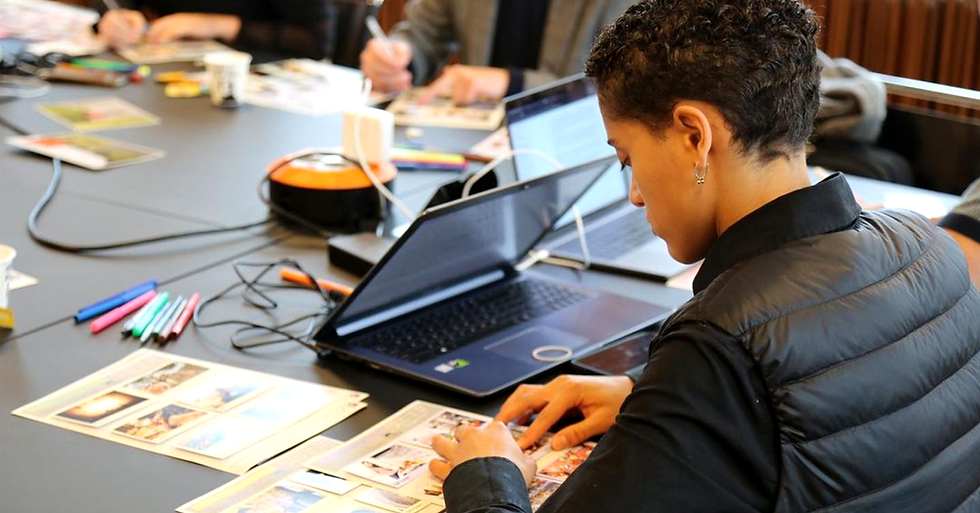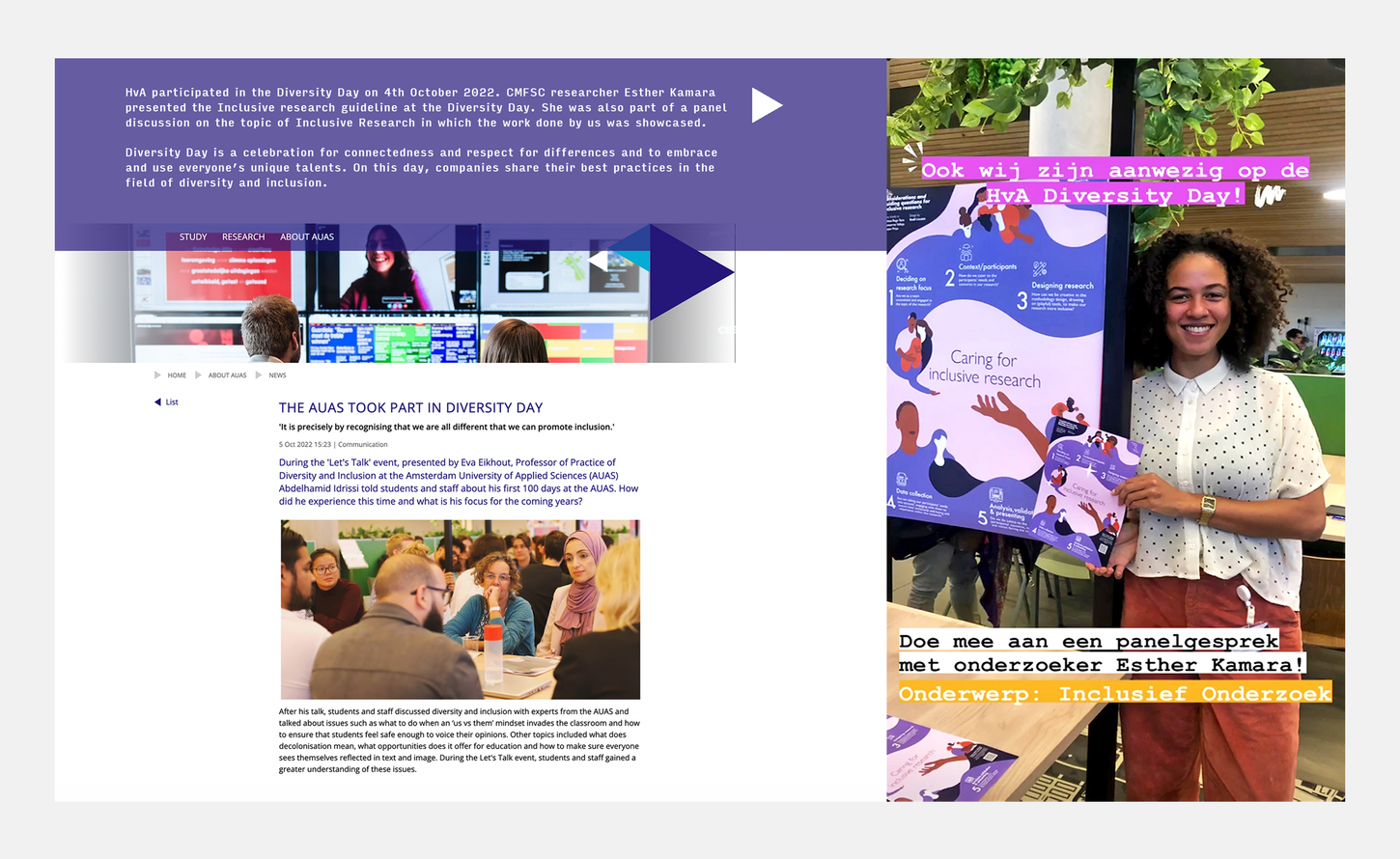DESIGNING FOR INCLUSIVE RESEARCH
CLIENT
Creative Media for Social Change (CMFSC)
THE TEAM
Lorena Rege Turo | Monserrat Vallejo | Nupur Priya
DURATION
4 months
CATEGORY
User Research | Participatory Design | Co-creation
MY ROLE
Researcher | Illustrator | Design strategist
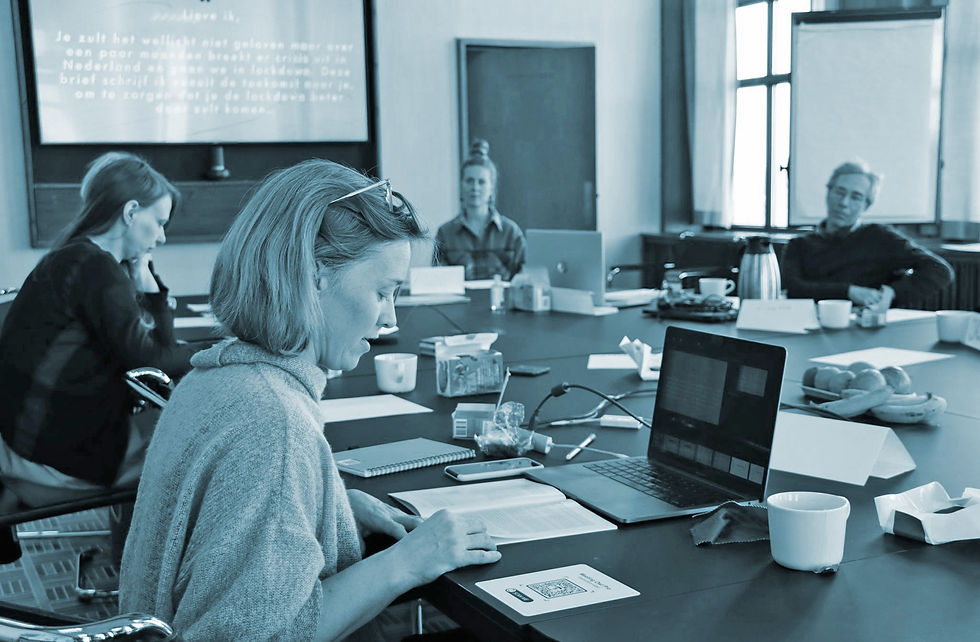
CONTEXT
Through the rapid changes and innovations in our society, it has been observed that different stakeholder groups get separated in the process of research, design and media. A focus is required to make a project feasible within the set time frame and a provided budget, but what happens to the stakeholders that are not taken into account and are excluded in this process? How can we be more inclusive in the research process?
THE BRIEF
With inclusivity being critical for any research process, Creative Media for Social Change (CMFSC) research lab wanted to explore possible insights on how participant focus groups can be more inclusive. The inclusivity project called the ‘ADD ON’ should focus on creating a guideline and a resource library to aid CMFSC researchers in their process.

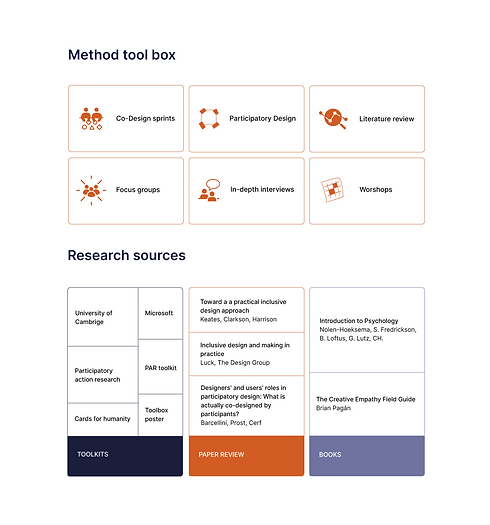
MAPPING RESEARCH & INSIGHTS
We started with a kick-off session with our client to collaboratively frame a research goal for this project. We used various research methods, co-creation sessions, existing toolkits and resources to understand various point of views around the topic of inclusive research. Our team diverged into different directions and created mind maps to bring out key insights.
After multiple discussions with the CMFSC researchers, we converged on key research focus and goals for this project. We then converged to key research questions and mapped key insights based on our primary and secondary research. Diverging into different directions helped us to come up with a holistic perspective on inclusive research. We further brainstormed about how to present this varied data and insights to help researchers be more inclusive in their own research projects.
PROJECT OUTCOME
During the course of this project, we recognised inclusive research as an ongoing process where we keep asking ourselves questions to be aware of the steps we take or can take to be more inclusive. Researchers are caretakers of their own research process, which comes with the responsibility to reflect and question their actions and keep trying to adjust the process to be as inclusive as possible.
That being said, CMFSC is also in search for the right tools and guidelines to integrate this way automatically in their way of doing research. To enable this, we came up with a set of questions, as a starting point to help the researchers further in their own research process. We hope this can create a step towards a more specific and more complete set of guidelines for the research community, to develop an even more inclusive and equal environment.
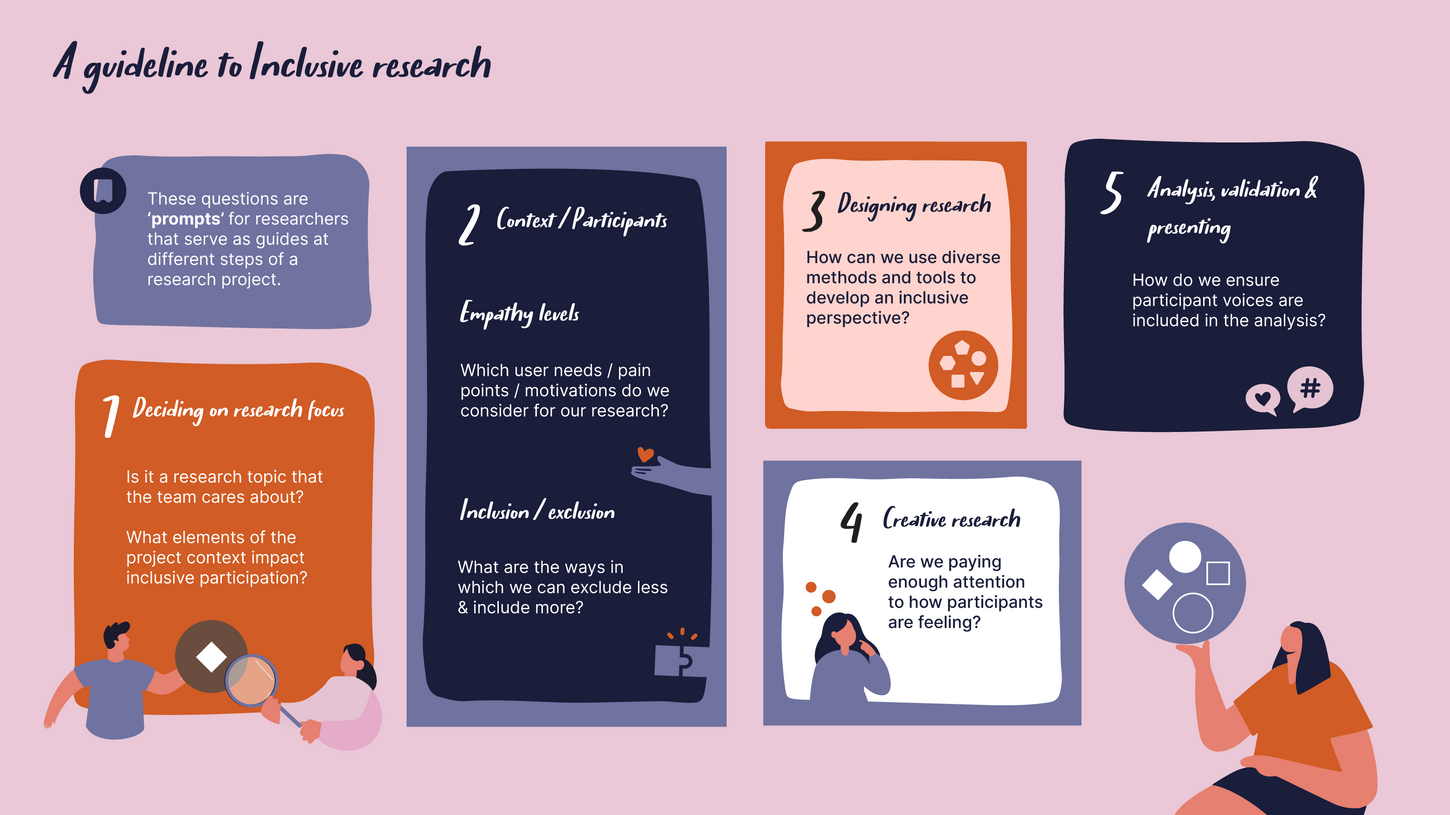
PHYSICAL POSTER FOR RESEARCH LAB
The physical poster below was created for the CMFSC research lab as a broad guideline for researchers. The poster showcases the key relevant questions at various phases of a research process. Based on the focus groups discussions with stakeholders, we identified the research phases relevant to the lab. The poster also has a QR code that would open to the teams digital resource material folder, easily accessible to any researcher in the lab.
DIGITAL POSTER & MATERIAL LIBRARY
As a key outcome of the project, we collated a digital poster with list of questions that can serve as a detailed checklist for the researchers at various stages of a research project. Each phase was connected to a link that led to a CMFSC teams library with resource materials that would guide the researchers answer some of the questions depending on the project context. A view the digital poster is presented below.

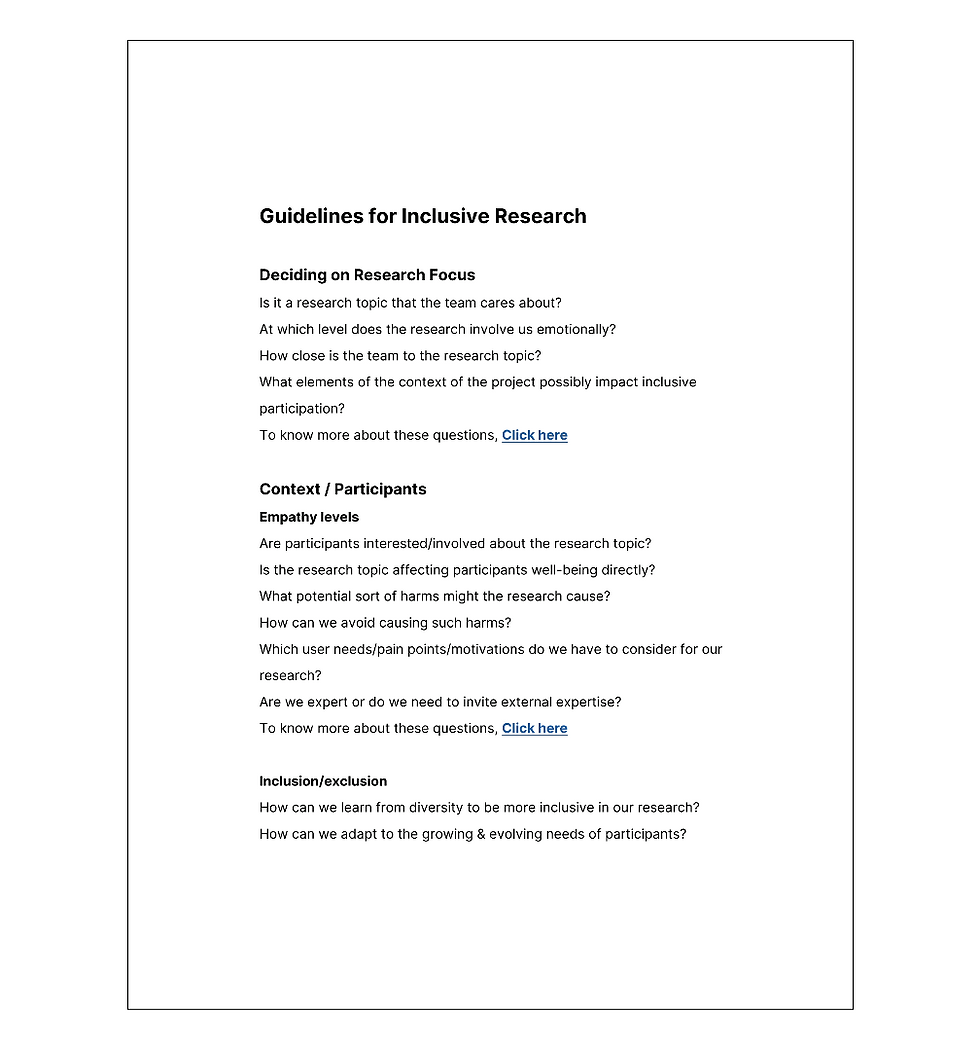
PROJECT IMPACT
The inclusive research guideline facilitates CMFSC researchers to keep in mind the important questions that arise at every step of a research process. The guideline is being used by researchers in organising diverse workshops and co-creation sessions for their research groups and help them understand the nuances of making research participants feel more included in the process. This Research Guideline was presented at HvA on Diversity Day to educate on diversity and inclusion in research practices.

